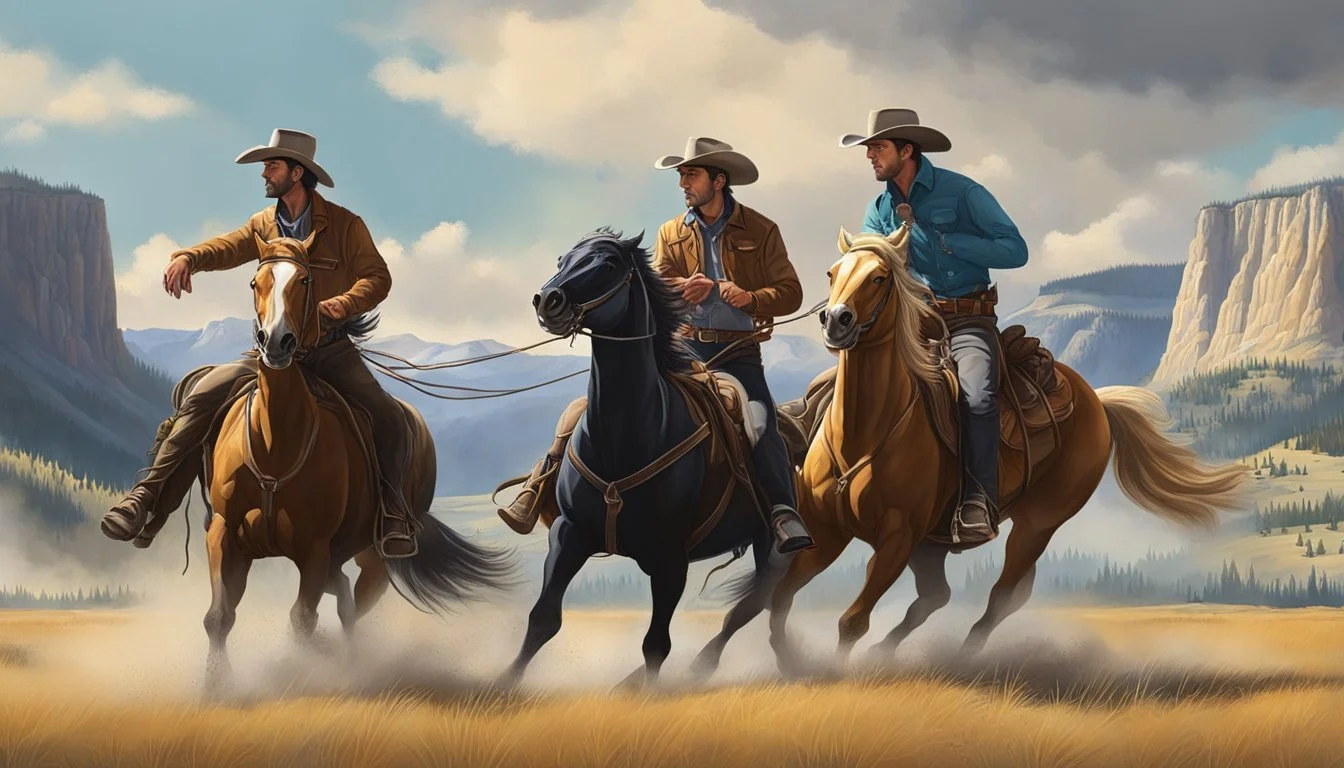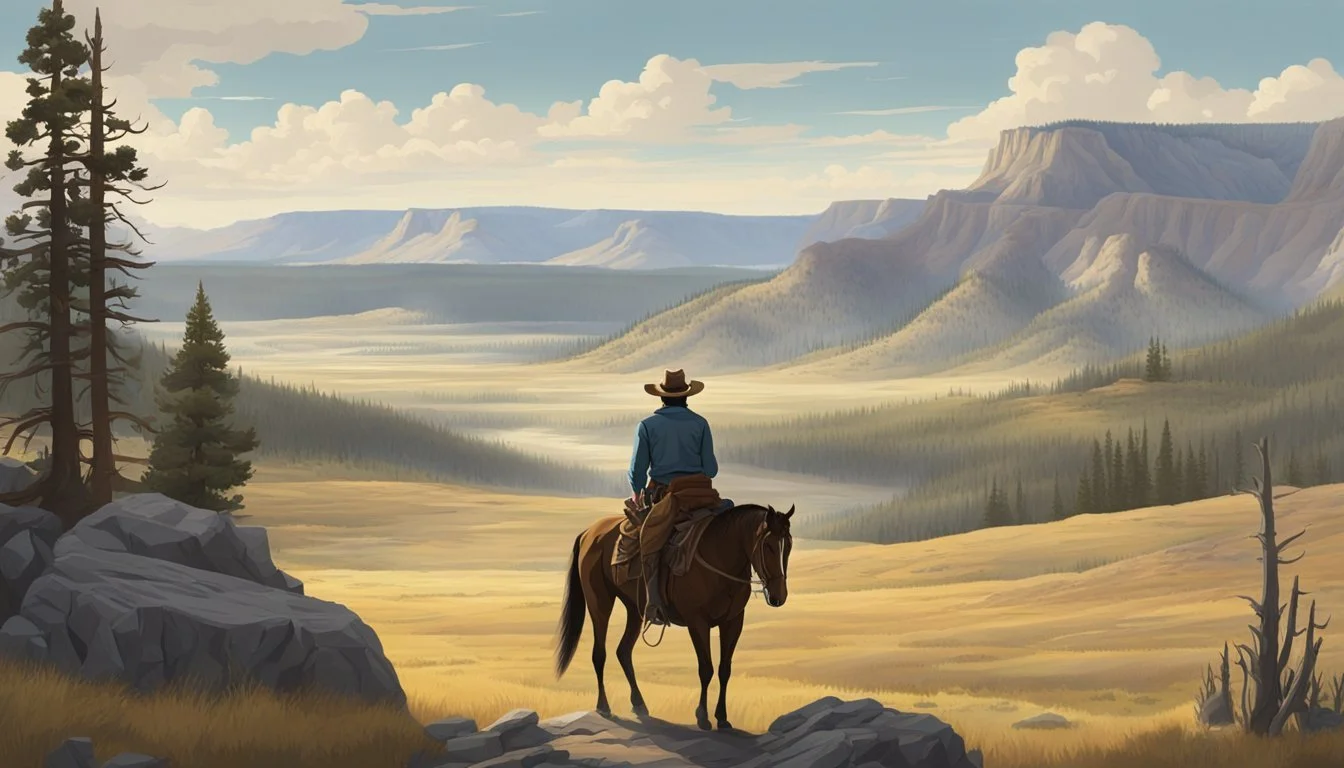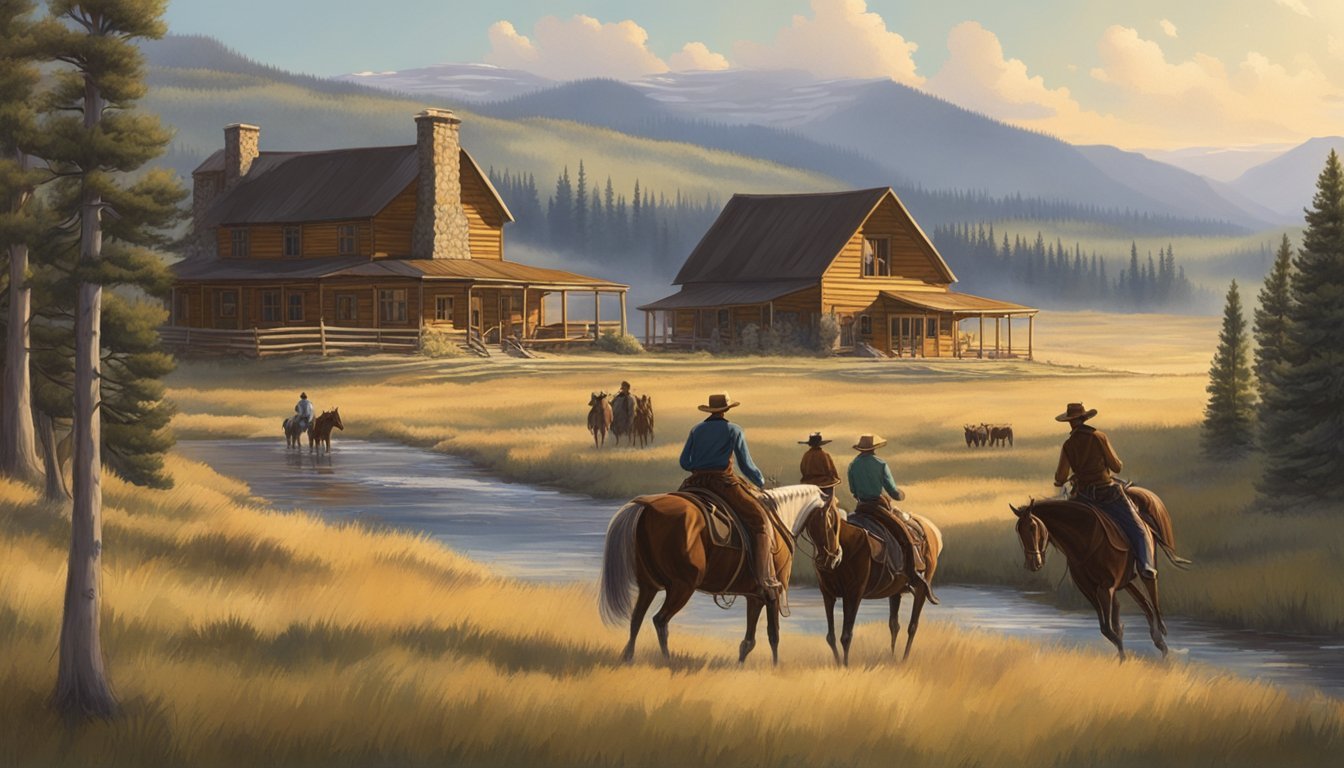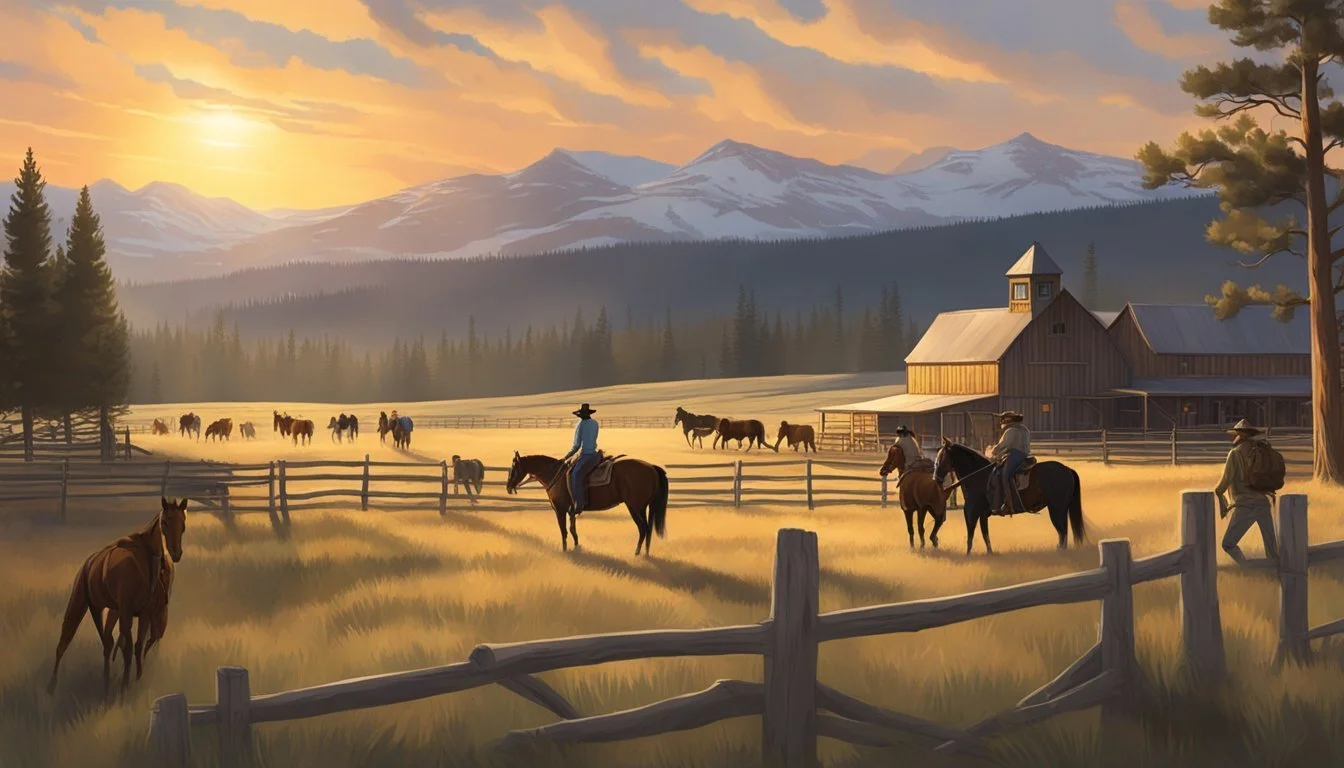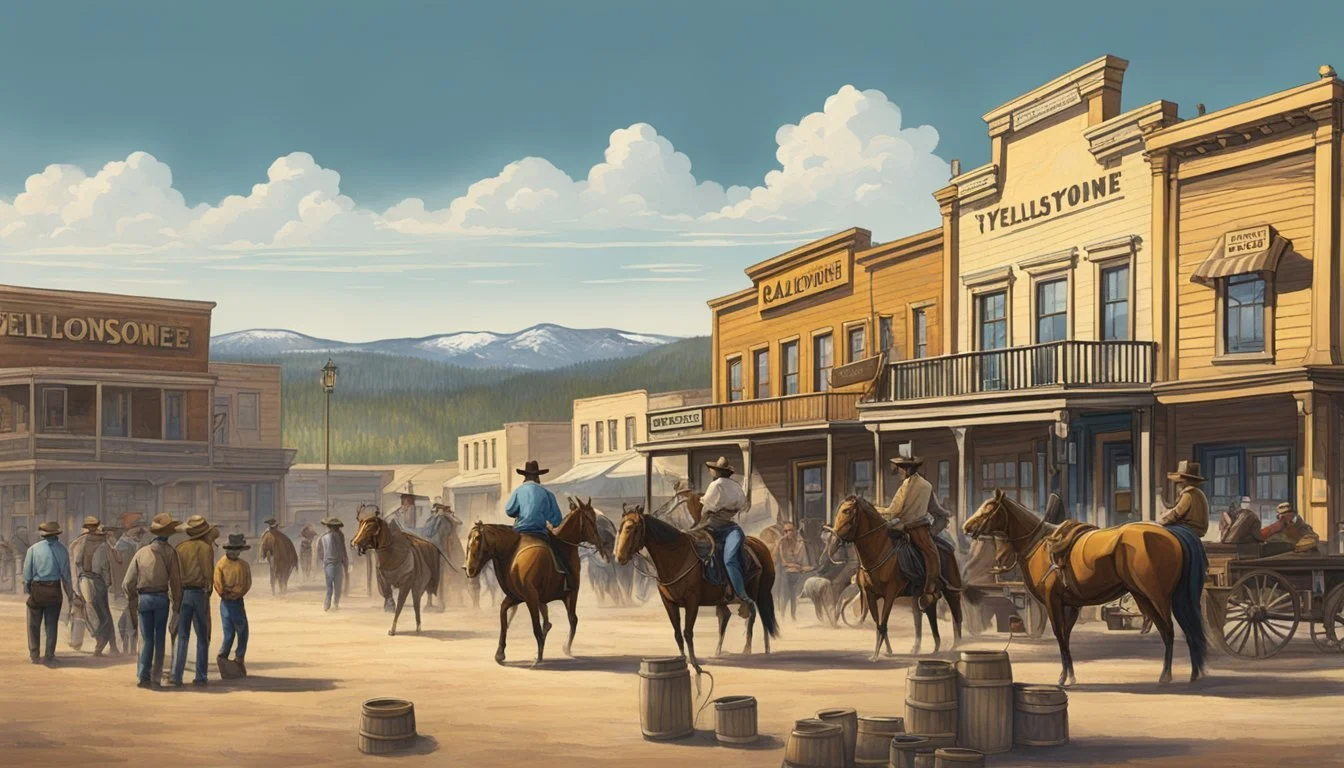Discover the Shocking Truth Behind Yellowstone Show Acres That Will Blow Your Mind
The Yellowstone television series has captivated audiences with its dramatic portrayal of the Dutton family's struggle to maintain control of their vast ranch. Many viewers wonder about the true size of the fictional Yellowstone Dutton Ranch depicted in the show.
The Yellowstone Dutton Ranch is described as being "the size of Rhode Island," which equates to approximately 776,900 acres. This massive expanse of land dwarfs most real-world ranches, emphasizing the incredible wealth and power of the Dutton family within the show's universe.
While the exact acreage fluctuates throughout the series, with mentions of the ranch growing by 200,000 acres at one point, it consistently remains an enormous property. This immense size serves as a central element of the plot, driving conflicts with developers, government officials, and neighboring Native American tribes who all covet portions of the Duttons' sprawling domain.
Overview of Yellowstone
Yellowstone captivates viewers with its portrayal of the American West and stunning natural landscapes. The show's setting draws inspiration from the iconic Yellowstone National Park and the region's rich history.
Historical Significance of 1883 and the American West
The 1880s marked a pivotal era in the American West. This period saw rapid expansion and settlement of the frontier. Railroads connected distant territories, while cattle ranching boomed. The show "Yellowstone" taps into this legacy, depicting modern-day ranchers facing challenges rooted in this historical context.
Conflicts between indigenous peoples, settlers, and the U.S. government shaped the region. These tensions echo in the show's storylines, reflecting ongoing struggles over land and resources. The 1880s also witnessed the establishment of Yellowstone National Park, setting a precedent for conservation efforts.
The Expanse of Yellowstone National Park
Yellowstone National Park spans an impressive 2.2 million acres across Wyoming, Montana, and Idaho. Its vast territory encompasses diverse ecosystems, from forests to geothermal features. The park's size allows for a wide range of wildlife habitats and geological wonders.
Established in 1872, Yellowstone became America's first national park. Its protected status has preserved unique landscapes and natural phenomena. The park's geysers, hot springs, and wildlife serve as both inspiration and backdrop for the "Yellowstone" series.
Visitors to Yellowstone can explore:
Old Faithful geyser
Grand Canyon of the Yellowstone
Mammoth Hot Springs
Lamar Valley (known for wildlife viewing)
The park's expansive wilderness mirrors the show's portrayal of wide-open spaces and untamed nature.
The Yellowstone Show
Yellowstone portrays the complex world of the Dutton family and their vast Montana ranch. The series blends family drama with high-stakes conflicts over land and power.
Plot and Setting
Yellowstone is set on the fictional Dutton Ranch in Montana. The show depicts the challenges of maintaining a large cattle operation in the modern West. Land disputes with developers, conflicts with the nearby Broken Rock Indian Reservation, and political maneuvering form key plot elements.
The Dutton Ranch spans an enormous area, with characters referencing it as being "the size of Rhode Island" - approximately 776,000 acres. This massive scale emphasizes the ranch's importance and the family's influential position in the region.
Key Characters and Dutton Family Dynamics
John Dutton, played by Kevin Costner, leads the Dutton family as the patriarch and ranch owner. His children play crucial roles:
Beth: Fiercely loyal and ruthless in business
Kayce: Former Navy SEAL, torn between ranch life and his indigenous wife's family
Jamie: Lawyer and aspiring politician with a complex relationship to the family
Family loyalty clashes with personal ambitions, creating intense drama. The Duttons face constant threats to their land and way of life, forcing difficult choices and alliances.
Cinematic Depiction of Ranch Life
Yellowstone showcases the beauty and harshness of Montana's landscape. Sweeping vistas of mountains and prairies serve as a stunning backdrop for the story. The show's cinematography captures the rugged essence of ranch life.
Scenes of cattle drives, horse training, and ranch work provide an authentic feel. The series doesn't shy away from the gritty realities of modern ranching, including financial pressures and conflicts with neighboring landowners.
Lee Dutton's cabin serves as a poignant location, representing the family's deep roots on the land. The ranch's day-to-day operations, from branding to roundups, illustrate the constant work required to maintain such a vast property.
Yellowstone Ranch Real Estate
The Yellowstone Dutton Ranch, central to the popular TV series, represents a vast and valuable piece of fictional real estate. Its size and worth reflect the grandeur of Montana's ranching heritage and the economic realities of large-scale land ownership in the American West.
The Scale of Dutton Ranch Holdings
The Yellowstone Dutton Ranch is portrayed as an enormous property, spanning approximately 776,900 acres. This fictional ranch borders Yellowstone National Park and the Broken Rock Reservation, placing it in a prime location. For perspective, the ranch's size is comparable to some of the largest real-life ranches in America.
At nearly 825,000 acres, it dwarfs many actual working ranches. The sheer scale of the Dutton holdings makes it a significant player in the show's fictional real estate market.
Economic Value of the Land
The value of the Yellowstone Ranch is substantial, reflecting its immense size and desirable location. While exact figures are not provided in the show, real-world comparisons can offer insight into its potential worth.
High-quality ranch land in Montana can sell for $10,000 per acre or more. Using this figure as a conservative estimate, the Dutton Ranch could be valued at billions of dollars.
The ranch's proximity to Yellowstone National Park likely increases its value further. This prime location makes it attractive to developers and investors, a recurring theme in the show's plot.
Comparison to Real-Life Ranches
The Yellowstone Dutton Ranch, while fictional, draws inspiration from real-world mega-ranches. Some notable comparisons include:
W.T. Waggoner Ranch: 535,000 acres
King Ranch: 825,000 acres
6666 Ranch: 266,000 acres
These real ranches demonstrate that the scale of the Dutton property, while impressive, is not entirely unrealistic. However, the Yellowstone Ranch would rank among the largest privately owned ranches in the United States if it were real.
Unlike many actual large ranches, which often span multiple counties or even states, the Dutton Ranch is portrayed as a more contiguous property. This aspect adds to its appeal and strategic importance within the show's narrative.
Significant Locations and Filming
The Yellowstone TV series showcases stunning landscapes and iconic structures that bring the Dutton family's world to life. Key filming locations and set pieces contribute significantly to the show's authentic Western atmosphere.
Chief Joseph Ranch and its Historical Background
Chief Joseph Ranch in Darby, Montana serves as the primary filming location for the Yellowstone Dutton Ranch. This 2,500-acre working cattle ranch has a rich history dating back to the late 19th century. Named after the Nez Perce leader Chief Joseph, the property features a 6,000 square foot lodge built in 1917.
The ranch's scenic mountain backdrop and expansive grasslands provide the perfect setting for the show's dramatic scenes. Its authentic Western architecture and period details lend credibility to the Dutton family's multi-generational ranching legacy.
Famous Cabins and Structures on Screen
Several distinctive cabins and structures on the Chief Joseph Ranch play important roles in Yellowstone's storylines. The Ben Cook Cabin, a rustic log structure, often appears in outdoor scenes.
Rip's Cabin, home to the ranch foreman, is another recognizable location. The Fisherman's Cabin near the river features in various fishing and nature scenes.
Large barns and outbuildings on the property serve as settings for ranch work and dramatic confrontations. These structures help create the immersive world of the Dutton ranch.
Guest Ranch and Visitor Experience
When not being used for filming, Chief Joseph Ranch operates as a guest ranch. Visitors can stay in cabins featured in the show, including the Fisherman's Cabin and Ben Cook Cabin.
Guests have the opportunity to experience ranch life firsthand, with activities like horseback riding and fishing. Tours of filming locations are available, allowing fans to see key Yellowstone sets up close.
The ranch's popularity as a tourist destination has grown significantly since the show began. This increased interest has boosted the local economy in Darby, Montana and surrounding areas.
Land and Livestock Management
The Yellowstone Ranch's vast acreage serves as the backdrop for complex land and livestock management practices. Cattle ranching forms the economic backbone, while careful stewardship of pastures and wildlife habitats maintains the delicate balance of the ecosystem.
The Importance of Cattle Ranching
Cattle ranching is central to the Yellowstone Ranch's operations. The Dutton family manages large herds across their expansive property, employing traditional and modern techniques. Cattle drives remain a crucial part of ranch life, moving livestock between grazing areas.
Quarter horses play a vital role in these operations. Their agility and endurance make them ideal for working cattle and traversing the rugged terrain of Paradise Valley.
The ranch's breeding programs focus on developing robust cattle lines suited to the Montana climate. This ensures the herd's health and productivity in the challenging mountain environment.
Preservation and Utilization of Pastures
Effective pasture management is essential for sustaining both livestock and wildlife. The Yellowstone Ranch employs rotational grazing strategies to prevent overuse and maintain grass quality.
Soil health is a priority. Ranch hands regularly test and amend the soil to support diverse plant life. This not only benefits the cattle but also enhances the natural ecosystem.
Water management systems, including strategic placement of wells and controlled irrigation, ensure optimal use of this precious resource. This careful planning allows the ranch to support its large cattle population while preserving natural water features.
Wildlife in Paradise Valley
Paradise Valley, where the fictional Yellowstone Ranch is set, is home to diverse wildlife. The ranch's land management practices aim to coexist with these native species.
Elk, deer, and pronghorn share the grasslands with cattle. Careful fencing and grazing rotation help minimize conflicts between livestock and wildlife.
The ranch also serves as a corridor for migrating species. Preserving these routes is crucial for maintaining the region's biodiversity. Ranch managers work with local conservation groups to monitor wildlife populations and adjust land use accordingly.
Predator management is a constant challenge. The show portrays the delicate balance between protecting livestock and respecting the role of predators in the ecosystem.
Conflict and Conservation
The battle over land in Montana forms the core of Yellowstone's dramatic storylines. Three key conflicts drive the show's tension and highlight real-world conservation issues in the American West.
Tensions with Land Developers and Conservationists
The Dutton family's Yellowstone Ranch faces constant pressure from developers seeking to capitalize on Montana's natural beauty. Market Equities, a powerful real estate firm, aims to transform the area into a bustling tourist destination.
This fictional conflict mirrors actual debates between preservationists and those favoring economic development in the Greater Yellowstone Ecosystem. The show portrays the delicate balance between maintaining open spaces and accommodating growth.
Conservationists in Yellowstone advocate for protecting wildlife corridors and preserving the region's unique ecosystem. Their efforts often clash with developers' plans for resorts, housing developments, and infrastructure projects.
The Struggle for Control over Montana Lands
Yellowstone depicts intense competition for Montana's vast acreage. The Duttons fiercely defend their 500,000-acre ranch against rivals and corporate interests.
Land ownership in the show reflects real concentrations of wealth in the region. Billionaires like Stan Kroenke have purchased massive ranches in Montana, mirroring the show's power dynamics.
Park County, where much of Yellowstone is set, grapples with land use issues similar to those portrayed on screen. Zoning decisions, water rights, and grazing permits become contentious topics as various factions vie for control.
Broken Rock Reservation Relations
The relationship between the Dutton Ranch and the neighboring Broken Rock Reservation adds another layer to Yellowstone's land conflicts. This fictional dynamic echoes real tensions between Native American tribes and non-Native landowners.
Land disputes on the show often involve competing claims to historically tribal territories. The Broken Rock Reservation seeks to reclaim ancestral lands, leading to confrontations with the Duttons.
These storylines reflect ongoing debates about tribal sovereignty, resource management, and cultural preservation in areas surrounding real-world reservations near Yellowstone National Park.
Cultural and Economic Impact
The Yellowstone TV series has profoundly influenced Montana's economy and cultural perception. Its portrayal of the state's rugged landscapes and ranching lifestyle has captivated audiences nationwide.
Influence on Local Economy and Tourism
Yellowstone has sparked a tourism boom in Montana, particularly in areas near the show's filming locations. The University of Montana's Institute for Tourism and Recreation Research reports a significant economic impact, with visitor spending reaching $834 million. This influx has benefited local businesses, hotels, and restaurants.
The Bitterroot Valley, featured prominently in the show, has seen increased interest from tourists and property buyers. Real estate prices in the region have risen as fans seek to experience the lifestyle depicted on screen.
Film tourism has emerged as a growing niche, with fans exploring locations made famous by the series. This trend has created new opportunities for tour operators and local guides.
Depiction of Montana's Culture and Lifestyle
Yellowstone presents a romanticized view of Montana's ranching culture, blending traditional cowboy imagery with modern conflicts. The show highlights the state's vast open spaces and rugged terrain, showcasing its natural beauty to a global audience.
The series explores themes of land ownership and rural values, sparking discussions about the changing face of the American West. Its portrayal of complex characters navigating between tradition and progress has resonated with viewers across demographics.
While the Dutton Ranch is fictional, it draws inspiration from real Montana ranches. The show's impact extends to local businesses, with some, like the Dutton-Goldfield Winery, benefiting from name recognition despite no direct connection to the series.

